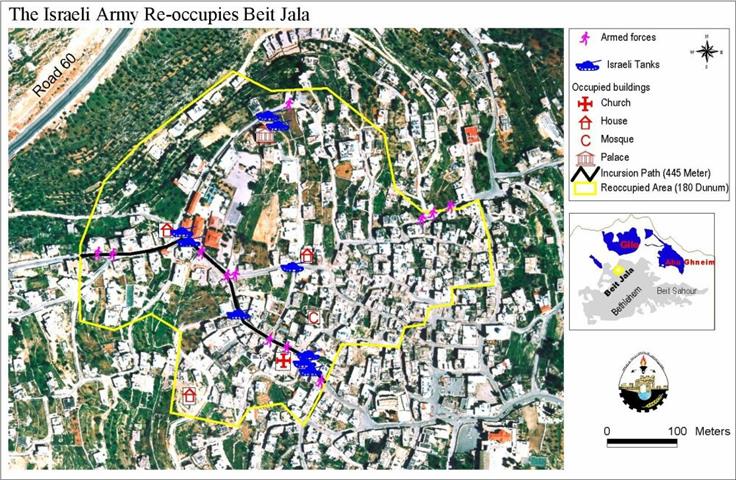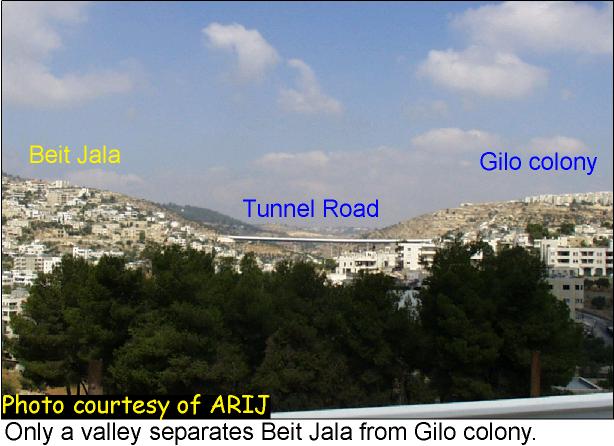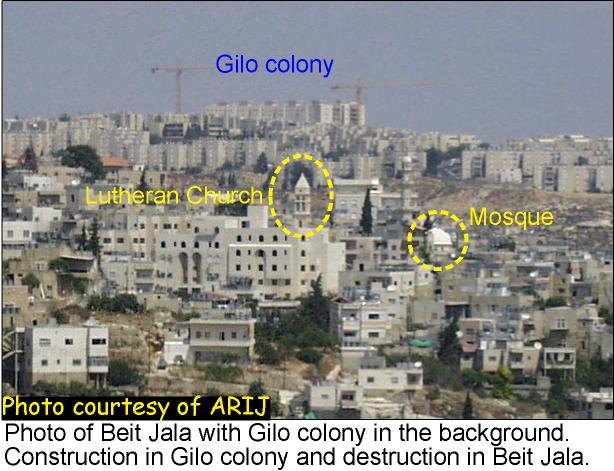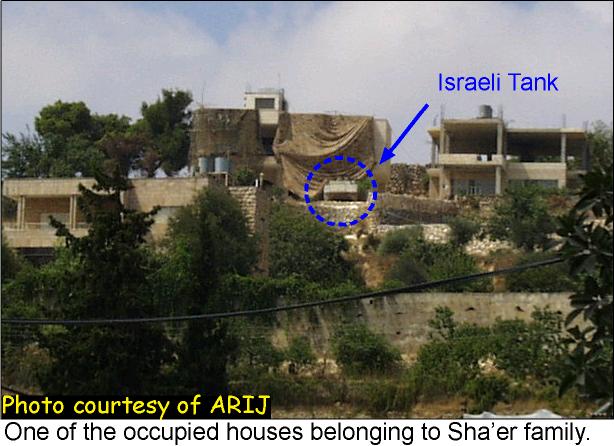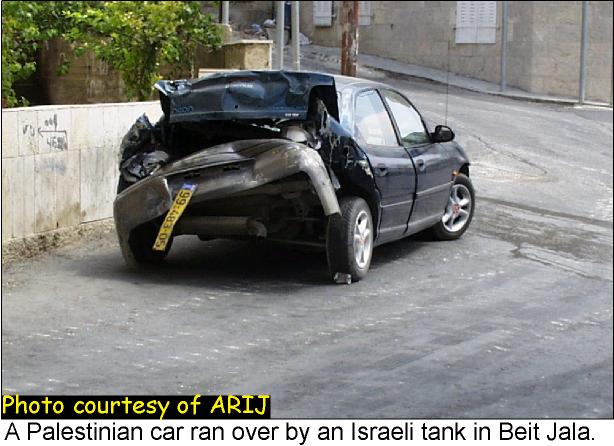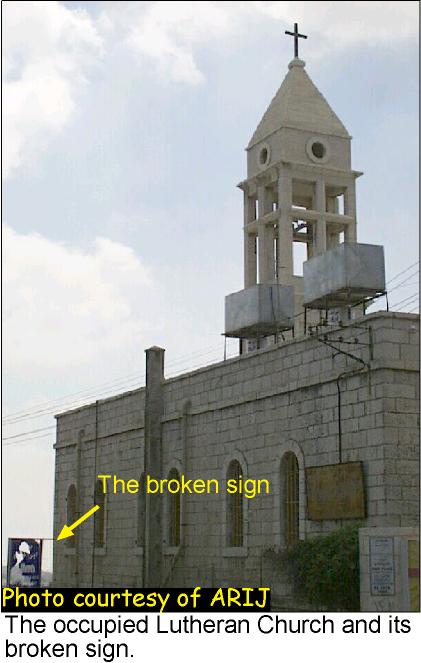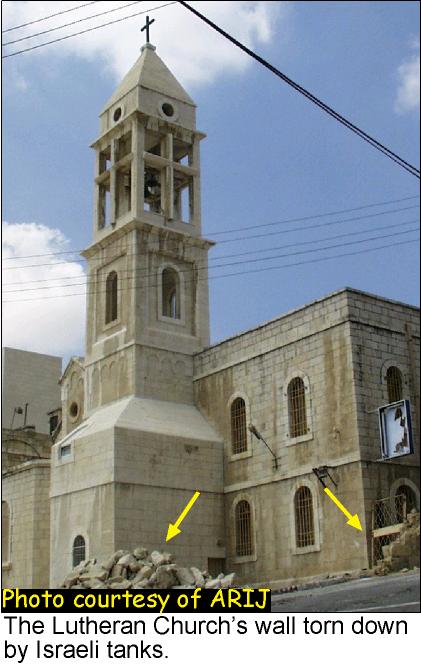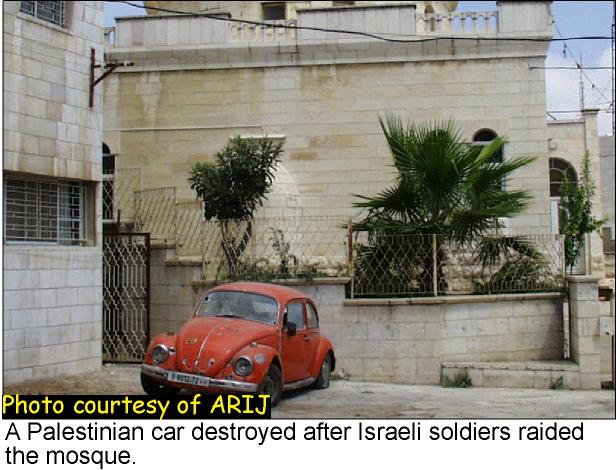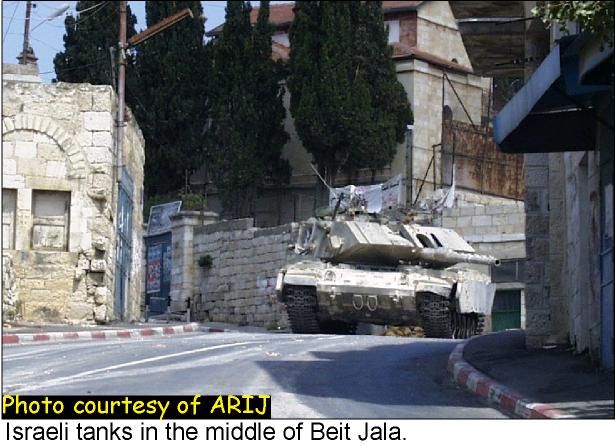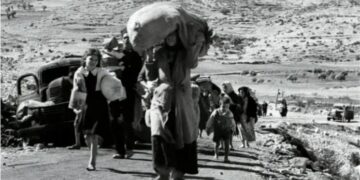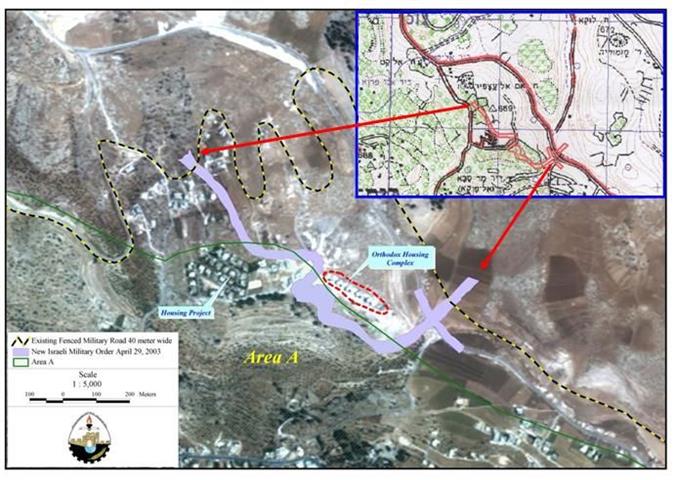Under the guise of preventing sniper fire on Jewish (settlements), the Israeli forces stormed Beit Jala, Belthlehem, and Beit Sahour. The incursions started after heavy bombardment of those three adjacent cities on the night of August 27th. On that night, Israeli tanks and armored vehicles moved in simultaneously from various entrances so as to throw the resistance off balance. In Beit Sahour and Bethlehem the incursions were temporary and by daylight the Israeli army moved back to their previous positions; but in Beit Jala the story was different; see map.
Beit Jala is a small town with a population of about 15,000. It is adjacent to Bethlehem, the birthplace of Jesus, and houses many ancient churches and sites that have historic, as well as religious, importance. Yet this did not prevent the Israelis from invading those revered places, occupying them, and turning them into makeshift jails and firing positions. The ostensible reason of course was to protect the Israeli settlement of Gilo from Palestinian sniper fire; see photo 1 and photo 2 . and .
The Israeli tanks and armored vehicles charged 450 meters into Area A in Beit Jala occupying an area of about 180 Dunums. Witnesses say that several houses were raided and were either occupied or their owners were held hostages in them; see photo 3. For two days the Israeli army imprisoned Imad Tareh in his home depriving him of electricity and water. Fortunately, Imad is well connected and happens to know some European consuls, so he contacted them and they negotiated his release.
In addition to that, the army also stole some Palestinian cars while destroying others; see photo 4 and photo 5. The people of Beit Jala are worried that the confiscated cars will be used by the Israeli secret police's special unit to infiltrate Palestinian territories disguised as Palestinians.
Furthermore, the Israeli tanks surrounded the Anglican Lutheran Church that has a boarding school housing 45 orphans. Khader Musallam, head of the boarding school, tried to stop the Israeli soldiers from moving into the complex. He told the Israeli soldiers that it is part of the church and he pointed to the sign outside and the soldiers responded by firing at the sign; see photo 6. The Israeli tanks also tore down the church's wall; see photo 7. The soldier insisted on entering and Khader adamantly refused but, after pointing a machine gun to his head, he reluctantly submitted. The soldiers drove the orphan children, whose ages ranged from 6 to 17, out of their rooms and forced them to sit in the church's courtyard to serve as human shields. A group of Swedish peace activists attempted to free the captive orphans 14 times but to no avail. Later on a group of European consuls managed to free the children; they were the same group that freed Imad Tareh. 6. The Israeli tanks also tore down the church's wall; 7. The soldier insisted on entering and Khader adamantly refused but, after pointing a machine gun to his head, he reluctantly submitted. The soldiers drove the orphan children, whose ages ranged from 6 to 17, out of their rooms and forced them to sit in the church's courtyard to serve as human shields. A group of Swedish peace activists attempted to free the captive orphans 14 times but to no avail. Later on a group of European consuls managed to free the children; they were the same group that freed Imad Tareh.
Even the nearby mosque was not spared the ravages of the Israeli army. Six Israeli snipers raided the mosque and stationed themselves in the Minaret. They even shot at Virgin Mary Orthodox Church from there; see photo 8 and photo 9..
When an ARIJ field worker attempted to take a photo of an Israeli tank, the soldier sitting behind the 500-mm gun pointed the weapon and prepared to shoot; see photo10 and photo 11.
The first full-fledged incursion operation was in August 14th in Jenin in which Israeli tanks and bulldozers destroyed a police headquarters building before withdrawing. However, in the case of Beit Jala, Israeli officials declared that their army would not move out of Beit Jala before ''cleaning'' it from snipers. In its statement explaining the reasons for the incursion, the Israeli military said its forces were taking care 'to prevent as much as possible harm to innocent civilians and foreign residents and holy sites.' After seeing these pictures one can hardly believe what the Israeli authorities say.
Prepared by:
The Applied Research Institute – Jerusalem


